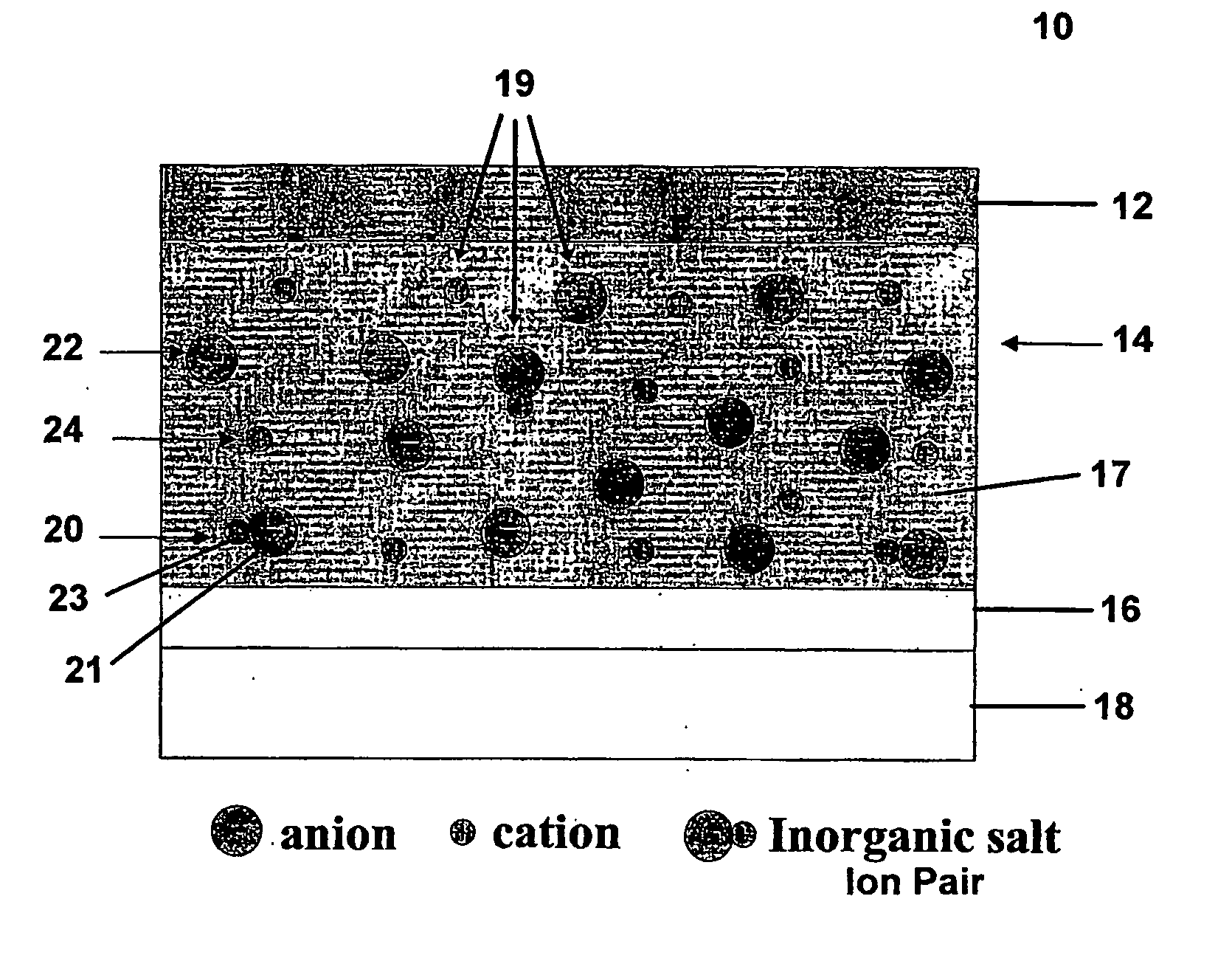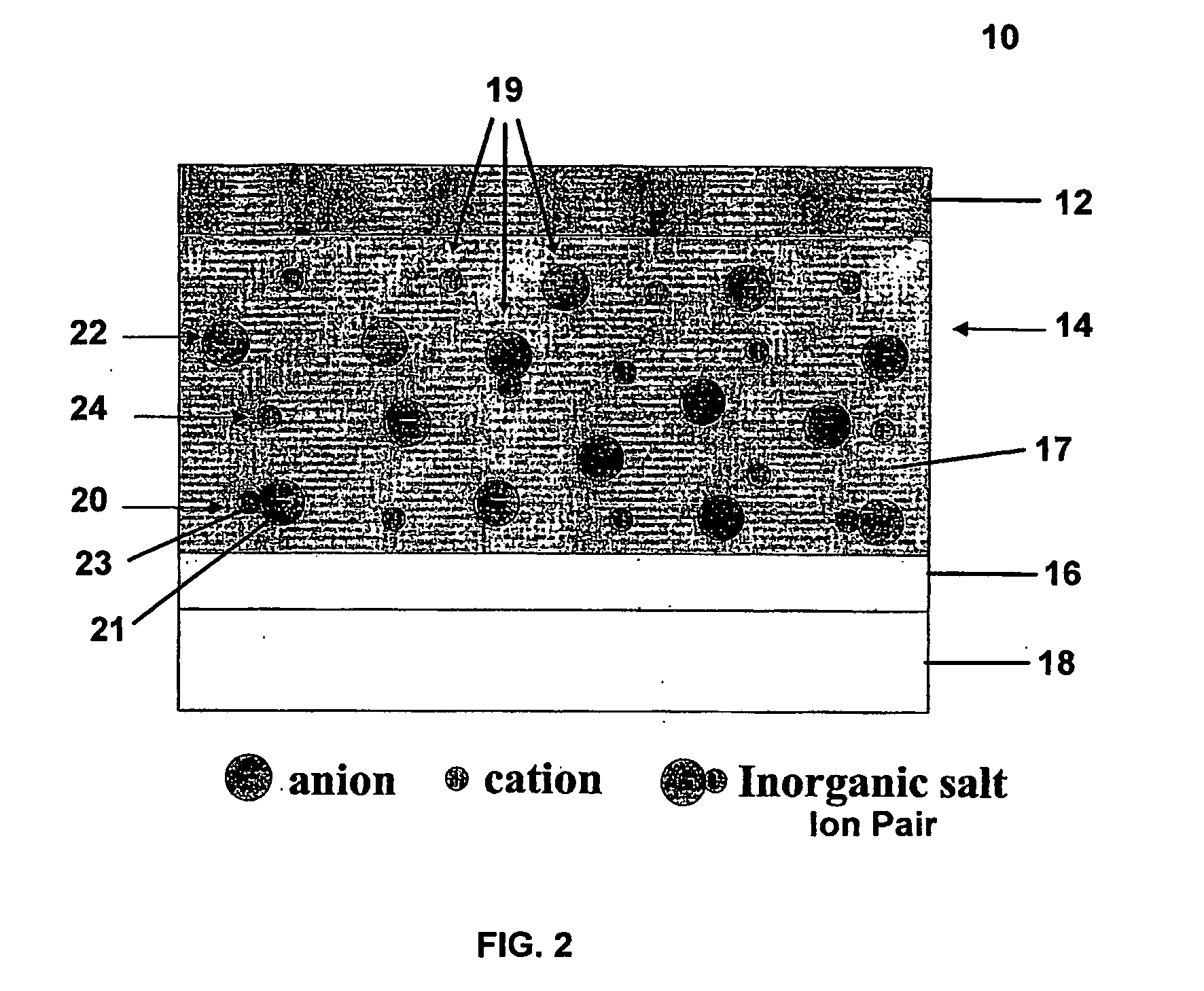Method of Improving the Charge Injection to Organic Films in Organic Thin Film Devices
- Summary
- Abstract
- Description
- Claims
- Application Information
AI Technical Summary
Benefits of technology
Problems solved by technology
Method used
Image
Examples
Embodiment Construction
[0020] Referring to the figures and first to FIG. 2, this shows an organic light emitting diode (OLED) indicated generally by reference numeral 10. The OLED 10 comprises a cathode 12, an inorganic salt-doped organic thin film indicated generally by reference numeral 14, an anode 16 and an anode substrate 18. The organic thin film 14 comprises an organic material 17 doped with one or more inorganic salts indicated generally by reference numeral 19.
[0021] The inorganic salts 19 exist in the film 14 as an ionic species having anions 22 and cations 24, or ion pairs indicated generally by reference numeral 20, or both. The ion pairs 20 have a negative pole 21 and a positive pole 23. Under an external voltage 26, as shown in FIG. 3, the cations 24 move toward the cathode 12 and the anions 22 move toward the anode 16, and the ion pairs 20 reorient with the negative poles 21 pointed to the anode 16 and the positive poles 23 pointed to the cathode 12, which results in a strong interfacial p...
PUM
 Login to View More
Login to View More Abstract
Description
Claims
Application Information
 Login to View More
Login to View More - R&D
- Intellectual Property
- Life Sciences
- Materials
- Tech Scout
- Unparalleled Data Quality
- Higher Quality Content
- 60% Fewer Hallucinations
Browse by: Latest US Patents, China's latest patents, Technical Efficacy Thesaurus, Application Domain, Technology Topic, Popular Technical Reports.
© 2025 PatSnap. All rights reserved.Legal|Privacy policy|Modern Slavery Act Transparency Statement|Sitemap|About US| Contact US: help@patsnap.com



